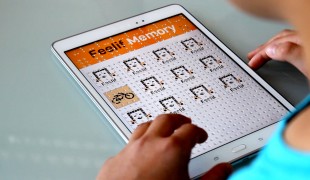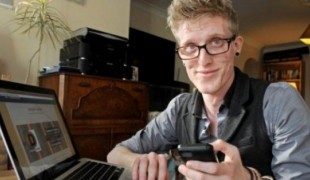- 2891
- 259
- 1
- 1
- 0
- Help Ukraine
About the solution
The professor invented a design which combines the book’s original text with Braille, allowing both sighted and blind people to read the same book at the same time.
Eric and his wife Leslie were frustrated because they wanted to able to read stories with their son. But traditional Braille books are printed in a way that doesn’t make it easy for a sighted person to read along. As the Braille reader’s fingers scan the Braille, the printed words are often covered up. Also some books were Braille-only books with no corresponding words in print, while others had Braille printed on plastic pages that either adhered to the original pages, sometimes covering the text and illustrations, or were bound in separately where the Braille didn’t align with the printed words.
“For Ethan to share books with siblings and friends (like his brother, Spencer), the original illustrations and text needed to remain intact. I basically took the list of problems, and thought, ‘How am I going to solve these?”, the father recalled.
Eric redesigned well-known children’s books so that print and Braille readers could enjoy the same book. This design includes the original text and illustration at the top of each page, and Braille at the bottom with the corresponding print also directly above.
This presents a solution by preventing the Braille reader’s hands from blocking what the sighted reader needs to see, and it enabled a sighted reader to learn Braille basics.
Each book also has a Braille glossary in the back for the alphabet, numbers and punctuation.
Eric presented his idea in a conference, and founded BrailleInk, a non profit organization to design and sell the books with his partner Bruce Curtis.
Adapted from: http://americanprofile.com/articles/brailleink/
More info: http://www.brailleink.org
This solution shall not include mention to the use of drugs, chemicals or biologicals (including food); invasive devices; offensive, commercial or inherently dangerous content. This solution was not medically validated. Proceed with caution! If you have any doubts, please consult with a health professional.
DISCLAIMER: This story was written by someone who is not the author of the solution, therefore please be advised that, although it was written with the utmost respect for the innovation and the innovator, there can be some incorrect statements. If you find any errors please contact the patient Innovation team via info@patient-innovation.com
-
-
637
-
2
-
11287

Feelif is a multimedia device for blind and visually impaired people
COMMUNICATION: Communicating, whether by speaking, listening, or other means
Reading
Video gaming
Blindness
Visual Impairment
Congenital Deafness
Hearing Disorders
App (Including when connected with wearable)
Videogame
Educational/Leisure device (book, toy, game...)
Vision problems
Hearing loss or ringing in the ears (tinnitus)
Managing Neurological Disorders
Improving Speech and Communication
General and Family Medicine
Medical Genetics
Neurology
Ophthalmology
Otorhinolaryngology
Pediatrics
Slovenia
-
-
-
370
-
0
-
5640

Girl invents toy to cope with dyslexia
Reading
Writing (letters, songs, peoms)
Studying
dyslexia
Visual Impairment
Hearing Disorders
Educational/Leisure device (book, toy, game...)
Vision problems
Difficulty speaking or understanding speech
Cognitive impairment
Memory loss
Confusion
Managing Neurological Disorders
Improving Speech and Communication
Child and Adolescent Psychiatry
Neurology
Pediatrics
United Kingdom
-
-
-
178
-
0
-
2248

Dyslexic man invents app to cope with this condition
COMMUNICATION: Communicating, whether by speaking, listening, or other means
Reading
dyslexia
Neuromuscular Disorders
Educational/Leisure device (book, toy, game...)
App (Including when connected with wearable)
Muscle weakness
Difficulty speaking or understanding speech
Confusion
Anxiety
Mood swings
Depression or anxiety
Managing Neurological Disorders
Enhancing Mental Health
Improving Speech and Communication
Neurology
Psychiatry
United Kingdom
-
 en
en